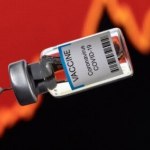22 August 2023
The words we use to speak, write, and read are called our vocabulary. We need a strong vocabulary to share ideas.
Teaching tips for vocabulary
- An English teacher should focus heavily on building vocabulary. When you teach your students new words, use strategies and activities that allow them to draw, read, write, and repeat new words as much as possible.
- Use examples suited to the age of your students. If you teach the word "happy" to younger students, your example might be, "My friend gave me a toy. I felt happy." But you probably would not use that example with an older student. In that case, an example might be, "My job makes me happy."
- Create a sentence frame for the students to use. Sentence frames help students use a word quickly and in a complete thought. They are ready-made sentences. Sentence frames for the word "happy" could be:
"I feel happy when ______."

Early Literacy: Vocabulary
" makes me happy."
- Use visual aids and appeal to all your students' senses. When you teach a new word, show a picture. If you teach the word "bug," show or bring in a bug! If you teach the word "happy," show them happiness. Have them act it out. Use the senses often.
- Once you teach a new word, use it often. The more students use a new word, the more likely they are to learn and remember it.
- Use vocabulary across subject matter. Include words you use in other classes like math and science. Students are more likely to learn a word if they use it in different situations.
- Finish the new word lesson with a question or quick activity. You could ask, "What do people look like when they are happy? Can you show me?" Then have each student show happiness.
Strategies for vocabulary
Strategy: First Teach Important Words and Ideas
Before reading a story, your students should understand the words and ideas in the story. Make a vocabulary list of key words in the text. Post the list in the classroom. Say the words with students. Talk about the meanings. Also explain any new ideas in the story.
Strategy: Active Read-Aloud
This strategy can be used for vocabulary and comprehension.
When reading aloud to your class, ask questions about a new or important word. Let students answer in their home language or English. Correct or add to the students' answers.
Here is an example:
TEACHER: "What does it mean to hate somebody?
STUDENT: "You do not like them."
TEACHER: "Yes. But a little or a lot?"
STUDENT: "A lot. You do not like them a lot."
Explain the meaning of the word. Give a definition, related words, and examples. Use your face, objects, pictures, or physical movements to show word meanings while they read aloud.
Strategy: Word Map
A Word Map is like a picture. It organizes information in a visual way. Word Maps help students to think about new words in different ways.
On the board or on paper, write the new word in the middle of the map. Tell the students to think about the word. Then they fill in the rest of the map with a definition, sentences using the word, related words, unrelated words, and pictures to explain the word. Do this as a whole class or in small groups.
Assessment for vocabulary
Assessing, or testing, vocabulary in your students is very important. Here are some ways to assess vocabulary of early and advanced learners.
Match words with visuals
This type of assessment is very helpful for early learners and learners with a very low English level. Choose the target words —the words you want to test. Then, collect or draw pictures to go with each word. You can also use objects. Say the word and then have the student choose the correct picture or object.
Interviews
Chose the target words and ask the student questions:
- Can you use this word in a sentence?
- What word in your language means the same thing?
- Use your face and body to show the word's meaning.
In their own words (Summarize)
Give students a short text to read. Make sure the text has target vocabulary. Students then can show their understanding of the vocabulary by re-telling, describing, or explaining the text. You can also ask students to talk about a character or favorite part of the story using the target vocabulary.
Role-plays
Role-plays are a form of acting. Give students a text to read and have them act it out. More advanced students can write a play using the target vocabulary. Students can play the role of the teacher and review vocabulary with the class.
Use these tips, strategies, and assessment methods that best serve you and your learners. Change them to fit your students and teaching situation.
I'm Anna Matteo. And I'm Caty Weaver.
Anna Matteo wrote this article for VOA Learning English. It is part of a larger collection of Early Literacy Materials.
_____
Words in This Story
focus – v. the center of activity, attraction, or attention
suit – v. to meet a person's needs or desires
visual – adj. something that is seen












